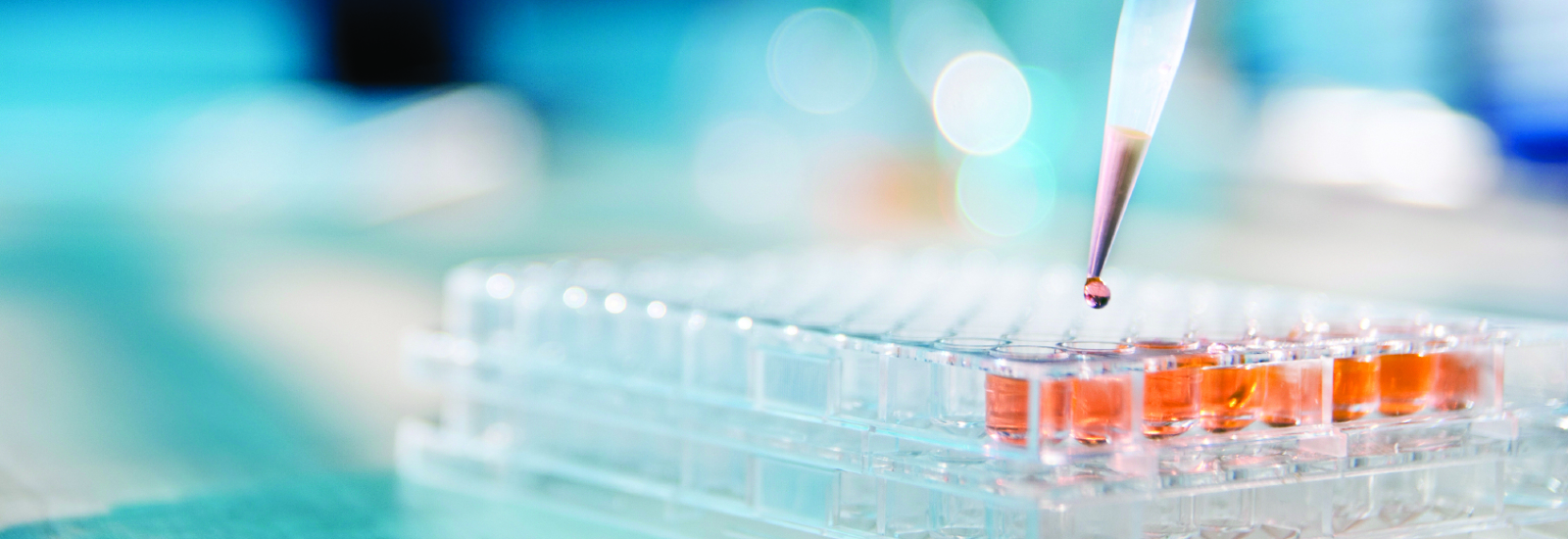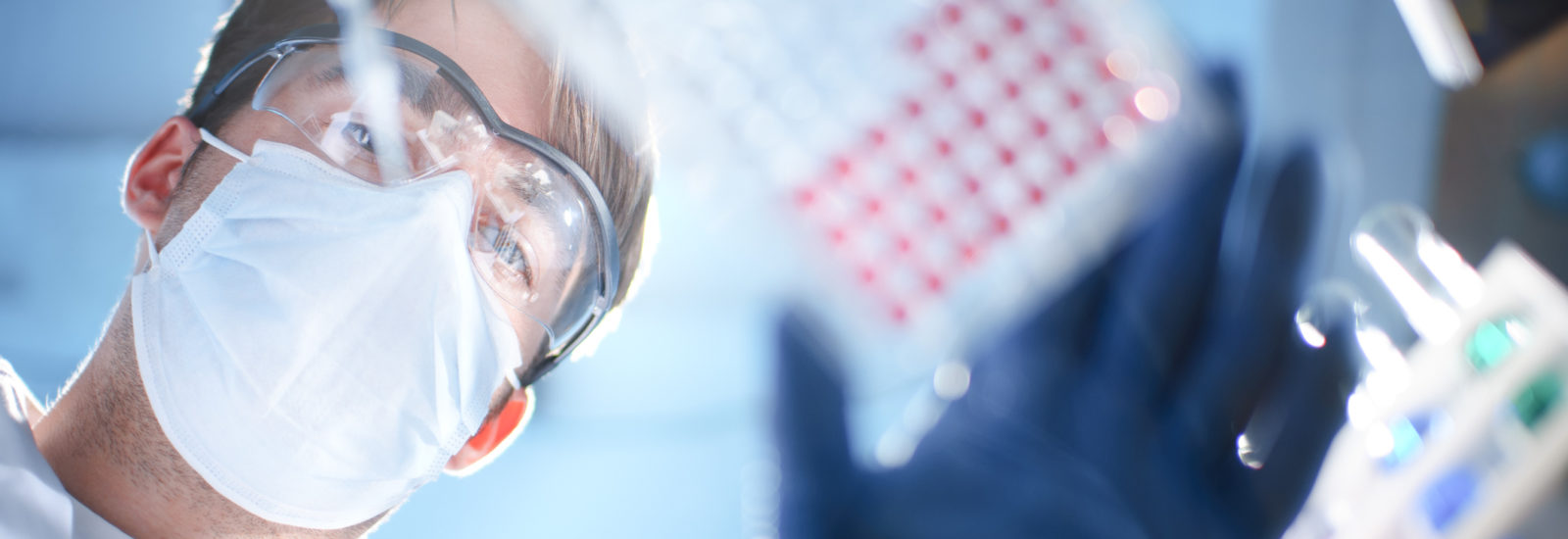

Which Hepatocytes Should I Use for What Studies?
- Test Systems & Methods
- March 25, 2022
- Dr. Chris Bohl, Michael Millhollen, Isis Smith
A Guide to Hepatocyte Test System Selection for ADME Studies
What are hepatocytes and why are they important?
Hepatocytes are the functional parenchymal cell of the liver. They are important for ADME/DMPK scientists because they’re the cells that carry out the bulk of metabolism for xenobiotic compounds and play a major role in detoxifying the body. Understanding how these functions affect your compound is essential in preclinical drug development.
Hepatocytes make up about 80% of the liver’s volume, but only represent approximately 60% of the total cell population. This basically means that they’re big, and because of their size and other physical properties, we can take advantage of these characteristics to purify them away from other cell types in the liver.
Who Uses Hepatocytes?
A lot of different groups use hepatocytes. This is especially true in the field of drug development with screening/discovery groups, R&D, ADME/DMPK groups, and academics. Hepatocyte uses vary from drug development and safety to pathogen-host interactions to general cell biology/biochemistry.
Why use hepatocytes instead of hepatic subcellular fractions?
Primary hepatocytes are considered the gold standard for ADME/DMPK studies because they are the most representative in vitro test system. They’re the cells with the enzymatic activities that are most interesting and impactful with regards to drug development work. Because they’re still living, they contain functional biochemical pathways that cannot be replicated with subcellular fractions. The activities are also not experimentally enriched like they are with microsomes. This makes them more representative and offers a more comprehensive view for scientists to better predict what could happen in vivo. This is also why regulatory agencies require the use of hepatocytes in certain assays. For instance, induction assays can’t be done in subcellular fractions.
Even though hepatocytes are the gold standard for ADME/DMPK work, there are some things that you need to take into consideration for selecting the appropriate test system. Hepatocytes eventually become limiting from particular donors, cost more, and require more refined handling techniques than subcellular fractions. However, XenoTech has a steady source of donor tissue to isolate hepatocytes and we can train you in the techniques needed for successful hepatocyte experiments, so their use is strongly recommended when appropriate. Read more about when to use hepatocytes vs other test systems.
Selecting the Right Hepatocytes for Your Study
Which test system best suits my needs?
Not all hepatocyte formats are suited for all assays, so we made a flow chart to help you narrow down which test system works best for your experiments. This flow chart is not all-encompassing, but it’s a good start for narrowing down what format you may need:

Primary vs Immortalized Hepatocytes
At the most basic level, hepatocytes can be differentiated between primary and immortalized hepatocytes. The first thing that needs to be decided is which to use, so here is a quick comparison between the two.
- Isolated from living tissue
- Genetically unmodified
- Terminally differentiated
- Do not proliferate in culture
- Are representative of the donor that they’re isolated from
- Have a finite time in culture
- Have undergone purposeful or spontaneous genetic modifications that lead to uncoupled growth characteristics
- Resist senescence and cellular death
- Proliferate in culture
- Can’t fully replicate the phenotypes that are found in primary hepatocytes, much like differentiated stem cells
Since immortalized cells don’t represent the complete array of phenotypes found in liver tissue and primary hepatic cells, they are limited in scope. However, that doesn’t mean that they aren’t useful for certain assays like lysosomal trapping, induction screening, or experiments that are focused on examining cell biology/biochemical pathways. If you need immortalized cells, there are various cell lines to choose from. XenoTech provides the Fa2N-4 cell line as well as cells from the JCRB cell bank.
Fresh vs Cryopreserved Primary Hepatocytes
Most of the time you’ll want to use primary hepatocytes, which are available as freshly isolated or cryopreserved cells. Both options have been accepted test systems for quite some time and are well described in literature.
- Never frozen for cryostorage
- Need to be used shortly after isolation from the tissue
- Suspension or plated formats
- Accepted test system by the field and regulatory agencies
- Carefully frozen to maintain stable enzymatic activity during long-term storage
- Can be used at your discretion for multiple years
- Available in various formats
- Accepted test system by the field and regulatory agencies
Freshly isolated cells can be used in suspension or plated format from animal or human tissue, but your experiments have to be ready to go when the cells are isolated and delivered. If you choose cryopreserved cells, you have the convenience to use them whenever it’s best for you and your lab. Cryopreserved hepatocytes also allow you to choose a hepatocyte lot based on characterized activities that aren’t known at the time that the fresh cells are isolated. Cryopreserved hepatocytes are characterized for post-thaw viability, yield, phase I and phase II activities, uptake, fold induction and optimal plating density. We also provide micrographs of the monolayers and, in some cases, we characterize intrinsic clearance rates for select cytochrome P450 enzymes (CYPs). However, your lab will need access to ultra-low temperature storage and other common tissue culture lab equipment to thaw and use them. Watch our thawing demo video or download our protocol (available at the bottom of many of our hepatocyte and media pages) to learn more.
Animal vs Human Primary Hepatocytes
The next thing you need to consider is the species from which the hepatocytes are sourced. Animal primary hepatocytes are useful for the same reason animal subcellular fractions are useful: they allow for species comparisons with human test systems. For instance, Cynomolgus (Cyno) monkey, Sprague-Dawley (SD) rat, CD-1 mouse and beagle dog are all very common small animal models for comparison with human test systems. Species comparison studies help scientists choose the appropriate small animal models for in vivo work and generally have good availability.
Additionally, researchers sometimes use animal hepatocytes simply because they’re less expensive than human. However, while animal hepatocytes are very useful and have some advantages over human, human hepatocytes are still the most relevant test systems for drugs intended for human use, so certain studies like CYP induction assays are required to be carried out using primary human hepatocytes.
Individual vs Pooled Donors
This choice is really only for human hepatocytes, as all small animal model hepatocytes come standard as pools. Individual donor hepatocytes (aka single donor) are pretty self-explanatory and pooled hepatocytes are simply a mixture of different individual tissue donors’ cells in the same vial. The number of donors in the pool can vary between products, but it generally ranges from 3 to 100 donors. Unless you’re performing experiments that require the use of individual donors, like induction assays, or examining the contribution of specific CYPs and their effects on an observed phenotype, pools will probably be the most useful for your work.
Suspension vs Plated Cultures
The final choice is between using suspension or plateable hepatocytes. This choice is based on what assays you intend to use the cells for and what end points you’re looking at.
Suspensions are suitable for:
- Screening
- Metabolic stability, reaction phenotyping, and metabolite identification
- CYP/non-CYP inhibition
- Uptake assays
Plated hepatocytes are useful for:
- CYP induction assays
- Efflux assays
- Metabolic stability, reaction phenotyping, and metabolite identification
- Inhibition assays
- Examining metabolism of microsomal low turnover compounds
- Host-pathogen interaction experiments
- 3D or enhanced 2D cultures
Suspension hepatocyte lots are hepatocytes that are cultured in suspension and generally will not attach to a surface or form a confluent monolayer on collagen-coated plates. Since they stay suspended in the media, they have a shorter useful incubation time of 2-6 hours as the viability and activity of the cells will drop over time due to anoikis. Therefore, they cost a bit less because you use less medium and don’t have to purchase special plates.
Plateable hepatocyte lots are cells that will attach to collagen-coated surfaces, flatten, and form a monolayer with coverage greater than 85% of the surface. The confluent monolayer is maintained for at least five days in culture. See some tips and tricks for working with plated hepatocytes.
General Recommendations for Selecting Primary Hepatocytes
If you plan to buy suspension hepatocytes, look for lots that have a viability above 70%. It’s worth noting that a higher post-thaw viability doesn’t necessarily mean that you’re going to get higher quality cells, as the rate of death and loss of activity is highly donor dependent. A lot with high viability, even over 90%, doesn’t guarantee that you will still have reasonable viability after 4-6 hours in culture.
If you plan to buy attaching hepatocytes, you’ll want to confirm that they form a good monolayer and that the monolayer will last the duration of your planned experiment. Post-thaw viability is not as important for attaching hepatocytes because only the viable cells will contribute to the formation of the monolayer. You’ll also want to make sure that the lot that you’re interested in has the ability to be plated in the well format you intend use, as not all lots plate efficiently in all well formats.
If you need plateable hepatocytes for induction assays, you’ll want to look through the data sheets and pick lots that have a mRNA fold induction of around 6-fold or more and at least 2-fold induction for specific CYP activity rates. Hepatocytes that induce lower can also be used, but cells that induce around 6-fold will give you good sensitivity and you will be less likely to miss induction.
It is important to look at specific data sheets and pick hepatocyte lots that are best suited for your experiments, such as the right CYP activity levels, viability, yield, uptake, induction, and monolayer formation. Not all lots are appropriate for all assays.
BioIVT and XenoTech’s Catalog of Hepatocytes and Mediums
We offer a wide variety of hepatocyte test systems. We can provide immortalized or primary cells, fresh or cryopreserved, animal or human hepatocytes in the format of your choice. We have individual donor and pooled donors, suspension and plateable cells, and can even plate the hepatocytes for you.
Some of our unique offerings include GeneknownTM genotyped donors, with known single nucleotide polymorphisms that lead to altered functional activity of various CYPs involved in xenobiotic metabolism, as well as the HepatoSure® 100-donor suspension pool in the traditional cryopreserved format.
Our most popular hepatocytes are our CryostaX® cryopreserved cell pellets. The CryostaX format is patented by XenoTech and offers several distinct advantages that are only available through this technology. Like our traditional hepatocytes, CryostaX pellets are available for suspension or plating, from individual or pooled donors, and isolated from animal or human tissue, depending on the product. It should be noted that all new XenoTech lots of cryopreserved hepatocytes will be in the CryostaX format, with the exception of HEPATOSURE.
BioIVT offers an even wider selection of hepatocytes, including:
Human Hepatocyte Products
- TRANSPORTER CERTIFIED™ Hepatocytes
- SPHEROID CERTIFIED™ Hepatocytes
- LIVERPOOL® Cryoplateable Hepatocytes
- LIVERPOOL® Cryosuspension Hepatocytes
- Cryoplateable Hepatocytes
- Cryosuspension Hepatocytes
- Fresh Hepatocytes
- Human upcyte® Hepatocytes
Animal Hepatocyte Products
- Cryoplateable Rat, Mouse, Dog, Monkey, and Minipig Hepatocytes
- Cryosuspension Rat, Mouse, Dog, Monkey, Guinea Pig, Rabbit, and Minipig Hepatocytes
- Fresh Rat, Mouse, Dog, and Monkey Hepatocytes
BioIVT also has additional unique preparations containing plated cells and the materials necessary to maintain long-term hepatocyte-fibroblast co-cultures or long-term hepatocyte-fibroblast-Kupffer cell tri-cultures. HEPATOPAC enables in vitro studies of compounds with low clearance and low metabolism rates. Models using HEPATOPAC technology provide critical data that cannot be obtained with models using suspension, plated, or sandwich-culture hepatocytes or other systems. Additionally, the micropattern architecture of HEPATOPAC cultures results in better consistency and reproducibility compared to random hepatocyte co-cultures. HEPATOMUNE cultures offer a highly functional in vitro liver platform that can be used to model inflammation-mediated hepatotoxicity. Using a proprietary fabrication method, human hepatocyte “islands” are cultured with stromal and Kupffer cells in a precise ratio. This configuration mimics the physiological microenvironment of the liver, enabling innate response to cytokine-mediated drug-induced liver injury (DILI). HEPATOMUNE cultures remain viable for at least 10 days providing a unique in vitro model to study hepatic inflammation and response to experimental conditions.
We also produce all of the hepatocyte mediums needed to successfully use our cryopreserved hepatocytes. XenoTech mediums have been optimized for use with XenoTech hepatocytes and we use these same mediums when characterizing our hepatocytes lots and in our sponsored CRO services. This way, you don’t have to source medium from other places and then wonder if it is really optimal for XenoTech cells. We also have this handy little graphic to show you which mediums are needed for which test systems:

BioIVT also provides media that is formulated specifically for incubating, thawing, and plating of BioIVT hepatocytes in culture. INVITROGRO hepatocyte media are antibiotic-free, giving the media a longer shelf life. The TORPEDO™ Antibiotic Mix is offered separately, so the antibiotic and supplement mix can be added to the INVITROGRO hepatocyte media at your convenience. INVITROGRO KHB is available for dilution of cells and in vitro assays. ACCULIVER kits enable BioIVT clients to duplicate the experimental conditions that we have developed and routinely use in BioIVT laboratories. Designed to be used with TRANSPORTER CERTIFIED hepatocytes, each kit includes the materials and protocols required to answer your liver specific questions.
Human and Animal Tissue Procurement
All of the tissues used at XenoTech are procured from accredited and licensed sources along with full consent for research. In the instance of human tissue, we do not accept tissues that could be used to save lives and they’re negative for every major animal or human pathogen, including SARS-CoV-2. However, we still recommend that appropriate PPE be used when working with these reagents. We have official statements prepared to outline how we obtain these tissues and we’re more than happy to share them with researchers to show their regulatory groups and/or to send to journals to satisfy ethical requirements for publication.
If you have any questions, please don’t hesitate to contact us! We have dedicated product technical and sales team members who can assist you with a wide range of hepatocyte test system difficulties and needs.
About the Authors
Related Posts
How to Choose the Right Test Systems for Your DMPK Studies
Why Switch to Hepatocyte Pellets?
Subscribe to our Newsletter
Stay up to date with our news, events and research

Do you have a question or a request for upcoming blog content?
We love to get your feedback
